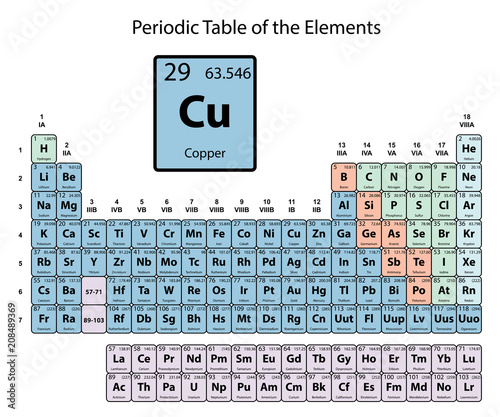In the modern periodic table, the elements are listed in order of increasing atomic number. The atomic number is the number of protons in the nucleus of an atom. The number of protons define the identity of an element (i.e., an element with 6 protons is a carbon atom, no matter how many neutrons may be present). The number of protons determines how many electrons surround the nucleus, and it is the arrangement of these electrons that determines most of the chemical behavior of an element.
Atomic No Of Cups


Copper's Electronegativty is 1.9. Electronegativity is a measure of how strongly atoms attract bonding electrons to themselves. What is the Heat of Vaporization of Copper? Copper has a Heat of Vaporization of 300.3 kJ/mol. Name: Copper Symbol: Cu Atomic Number: 29 Atomic Mass: 63.546 amu Melting Point: 1083.0 °C (1356.15 K, 1981.4 °F) Boiling Point: 2567.0 °C (2840.15 K, 4652.6 °F) Number of Protons/Electrons: 29 Number of Neutrons: 35 Classification: Transition Metal Crystal Structure: Cubic Density @ 293 K: 8.96 g/cm 3 Color: red/orange Atomic Structure. In the modern periodic table, the elements are listed in order of increasing atomic number. The atomic number is the number of protons in the nucleus of an atom. The number of protons define the identity of an element (i.e., an element with 6 protons is a carbon atom, no.
In a periodic table arranged in order of increasing atomic number, elements having similar chemical properties naturally line up in the same column (group). For instance, all of the elements in Group 1A are relatively soft metals, react violently with water, and form 1+ charges; all of the elements in Group 8A are unreactive, monatomic gases at room temperature, etc. In other words, there is a periodic repetition of the properties of the chemical elements with increasing mass.
Atomic No Of Cobalt
In the original periodic table published by Dimitri Mendeleev in 1869, the elements were arranged according to increasing atomic mass— at that time, the nucleus had not yet been discovered, and there was no understanding at all of the interior structure of the atom, so atomic mass was the only guide to use. Once the structure of the nucleus was understood, it became clear that it was the atomic number that governed the properties of the elements.
